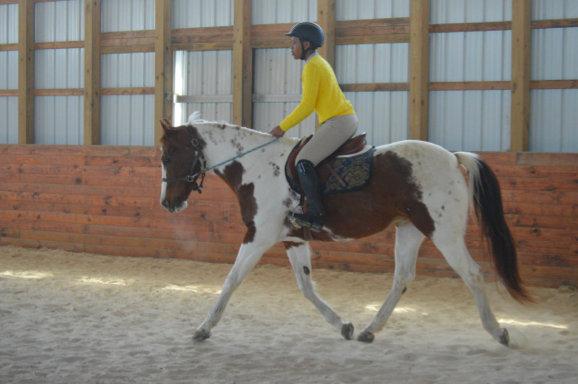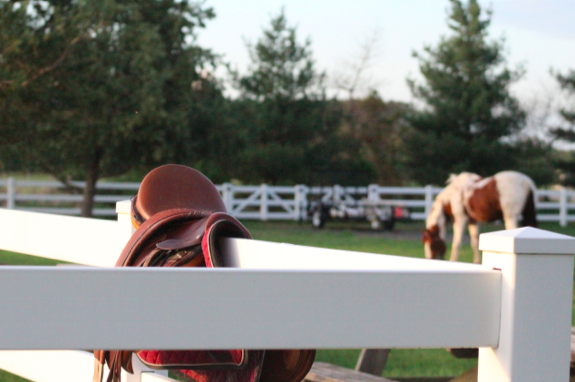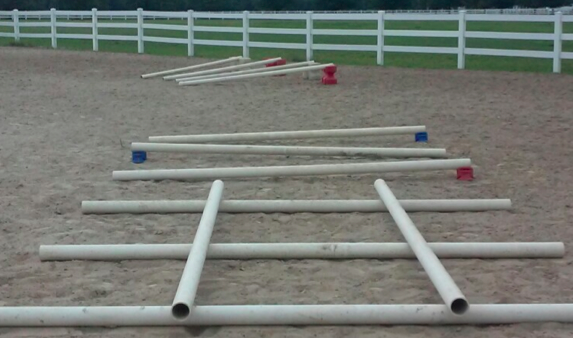By T. A. Eyo ¥

Photo by Shelby Moore
One day, I found myself in a new and slightly odd situation. I rode at my first barn for about four years, and during that last year, I had joined an IEA team at a different barn. My dad laid down the law and told me that I simply wouldn’t be able to afford IEA lessons and regular lessons―psh, but what do dads know? In any case, I still had a working lease on my show horse. I could ride her once a week on the flat, sans trainer. Being on my own (more or less) was foreign territory.
I, too, had my many issues with nerves, including a fear of cantering. It was because of that fear that I tried to avoid cantering as much as I could, and when I did canter, it wasn’t for long. Many of those first rides were me avoiding problems rather than addressing them. I was afraid of messing up, which is fair enough, but it didn’t allow me to progress in any way, shape, or form.
The horse was a plodder for all intents and purposes, but she wasn’t the most relaxed. At some point, I decided to have a talk with myself. No, I wasn’t a trainer. I couldn’t turn my horse and myself into a Grand Prix pair, but I needed to re-establish my fundamentals. The first goal: relax.
The whole “20 Minute Ride” thing is somewhat of a poke at myself. I have this habit of not riding for long, typically
anywhere from 15mins-35mins if I’m riding on my own. The overall goal was to make the most out of that time. I did this through goal setting. Relaxation was a major issue for me, and with it being the base of the training pyramid (along with rhythm), it was an obvious place to start.
Teaching myself to relax began with optimizing my warm up, which included the tacking up and grooming process. The Posture Prep system is one way to get your horse relaxed while grooming, and spending more

Photo by T. A. Eyo ¥
time getting your horse ready can also slow you down and calm your nerves. The rides were short, but the preparation was lengthy. When I was actually on the horse, I put a large focus on pulling myself off the rail, which at first only meant circles. I would plan ahead of time how many circles to do and where I would do them, and I would repeat the patterns for both directions.
Slowly but surely, my plans evolved: less circles, more figure-8s, more transitions, more time spent cantering. I even jumped on the pole work bandwagon, and I have not looked back since. Eventually, I started riding longer because I could focus on things except what I could do wrong.
To break it down, the “20 Minute Ride” has three parts to it:
1) Pick your goal based on where you currently are with your horse, and make sure that it’s realistic.
2) Plan ahead so you can stay focused on exactly what you want to accomplish during your ride. Don’t back out or be lazy.
3) Track your progress. I highly recommend bullet journaling. Use it to reassess your goal. Maybe you need to scale back, or maybe it’s time to pick something bigger.
I’ll be the first to admit that this is an oddly specific philosophy, but if you’re in the same situation like me where just getting on the horse makes you anxious, learn from my experience. Some get better through tough love, but others, like myself, need to dial it back a bit before moving forward. Through this new mindset, I was able to create a better bond with my horse, and I got to know her a lot better. There are many different ways to build up a horse and rider pair. This worked for me, and I hope it can work for you. Good luck and be well!

Photo by T. A. Eyo ¥

